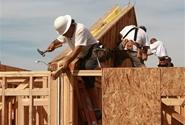Analysis

February 16, 2017
Housing Starts Decline in January but Permits Increase
Written by Sandy Williams
Housing starts in January declined by 2.6 percent from the revised December total but were 10.5 percent higher than the January 2016 rate, according to the latest report by the U.S. Census Bureau and the U.S. Department of Housing and Urban Development. Housing starts were at a seasonally adjusted annual rate of 1,246,000.
Single family starts were up 1.9 percent from December to a rate of 823,000. Starts for apartment style housing of five units or more declined 7.9 percent.
Regionally, starts increased by 55.4 percent from December in the Northeast and 20.0 percent in the South. Starts declined in the Midwest and West by 17.9 percent and 41.3 percent, respectively.
Permit authorizations, an indicator of future residential construction, were at a seasonally adjusted annual rate of 1,285,000, up 4.6 percent from December and up 8.2 percent from January 2016. Single family permit authorizations decreased 2.7 percent from December, while authorizations for buildings of five units or more increased by 23.5 percent. Permit authorizations increased in three of the four U.S. regions from December to January. Permits were up 29.6 percent in the Northeast, 5.3 percent in the Midwest, and 9.9 percent in the South. The West was the only region where permit authorizations declined, at -13.2 percent.
The National Home Builders Association reported that builders continue to be optimistic about future housing construction but are concerned about minimizing costs while dealing with a lack of developed lots and labor shortages.
“Despite these constraints, the overall housing market fundamentals remain strong and we expect to see continued growth this year as some of these concerns are addressed,” said NAHB Chief Economist Robert Dietz.
“While builders remain optimistic, we are seeing the numbers settling back into a normal range,” said NAHB Chairman Granger MacDonald. “Regulatory burdens remain a major challenge to our industry, and NAHB looks forward to working with the new Congress and administration to help alleviate some of the pressures that are holding small businesses back and making homes less affordable.”







